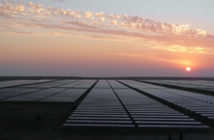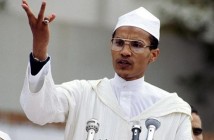February 20, 2011
* Writing in the New York Times (Fears of Chaos Temper Call for Change in Morocco February 20, 2011, Steven Erlanger writes that demonstrations in Morocco have been muted by a fear of chaos, a prevalent security apparatus and genuine respect for the king, Mohammed VI. More than 10,000 people showed up to protest in cities around the country. Erlanger writes that calls for reform include the imposition of limits on the power of the King Mohammed VI and the creation of a more representative democracy. One royal adviser is quoted as saying, “The king is trying to catch the wind of reform and use it.”
February 21, 2011
* The Wall Street Journal’s Marc Champion reports that five people were killed in protests and 128 were wounded in protests that attracted 37,000 people around the country (Morocco Joins In, Defying Predictions February 21, 2011). Champion reported a limited police presence and that business appeared to be continuing as usual. He also reported that protests stopped short of demanding the resignation of King Mohammed VI. There were indications that the government was shaken by the protests. Some representatives attempted to cast the protest organizers as foreign agents, homosexuals or in other terms.
* In a piece in Foreign Policy journalist Laila Lalami offers her analysis of Morocco’s “moderate” stance in the Arab world both before the Arab Spring and now (Morocco’s Moderate RevolutionFebruary 21, 2011). She stresses that King Mohammed VI has been able to remain popular by in fact distancing himself from an unpopular government. Yet she stresses that it is the King who in fact empowers the government. Moroccans often blame the rampant corruption in all state institutions on the cabinet, even though each and every member of it is appointed by and accountable to the king. She also writes that in the 12 years that he has been in power King Mohammed has “co-opted many positive forces for change in Morocco,” often by providing money directly to projects and causes.
February 22, 2011
* Time Magazine paints a portrait of the political situation in Morocco and recaps Sunday’s protests (Protests in Morocco: Just Don’t Call It a Revolution February 22, 2011). It points out that one reason for the relative calm is the popularity of King Mohammed VI. While it quotes critics as characterizing his reforms as “window dressing” and does enumerate failures on the part of the regime, it describes many reforms that have taken place. The article also analyzes how many Moroccans distinguish the monarch from the mechanics of government which many Moroccans see as corrupt.
February 23, 2011
* A young Moroccan woman set herself on fire because she was unable to qualify for public housing as a single mother, according to Reuters. Morocco was praised in 2004 for enacting a family law extending more rights to women than in many other Arab countries. However, single women are not included under the law.
* Patricia Sauthoff of Current Intelligence (The Far End of the Maghreb February 23, 2011) paints a desultory picture of life in Marrakech. However, Morocco seems poised to avoid the turmoil of other Arab states.
The protests in Morocco are less likely to be broadcast around the world than others taking place in North Africa. This isn’t because they’re less important. They’re just less dramatic. Rather than a people trying to topple a longstanding government, Moroccans are trying to compromise with the system that already exists. Reform might not play out well on television but it certainly is just as extraordinary.
February 25, 2011
* Driss Guerraoui, Morocco’s Secretary General of the newly established Economic and Social Council and the Prime Minister’s chief economic advisor, said that Morocco was not likely to be affected by popular uprisings “because we have a popular king.” “Our country has given more rights and freedoms to its people than other countries in the region…. In the last 11 years we have advanced in many aspects, including individual and collective freedoms.”
February 26, 2011
* A possible consumer revolution is a possibility in the Middle East and North Africa, writes Suzy Menkes in the New York Times (Luxury and Unrest February 25, 2011). Menkes writes that the middle class consumer sector has been kept from growing in autocratic regimes and all of that may change. An analogy is drawn to China’s emergence on the world commercial scene.
February 28, 2011
* In Lebanon’s Daily Star (Why Arab Kings May Outlast the DictatorsFebruary 28, 2011) Michael Meyer offers an analysis on why monarchies may be the only governments to withstand the pressures of the Arab Spring. He says that “surprising as it may seem” some of the regions monarchies (e.g. Morocco, Jordan) have created a “more liberal” political and social environment for their citizens. He also cites the legitimacy bestowed by religious legitimacy. It also helps that kings can position themselves as “above” politics. A king can also stand above the political fray, at least in theory. He is not aligned to specific political parties or ideologies, and if trouble looms he can blame and dismiss the government.






